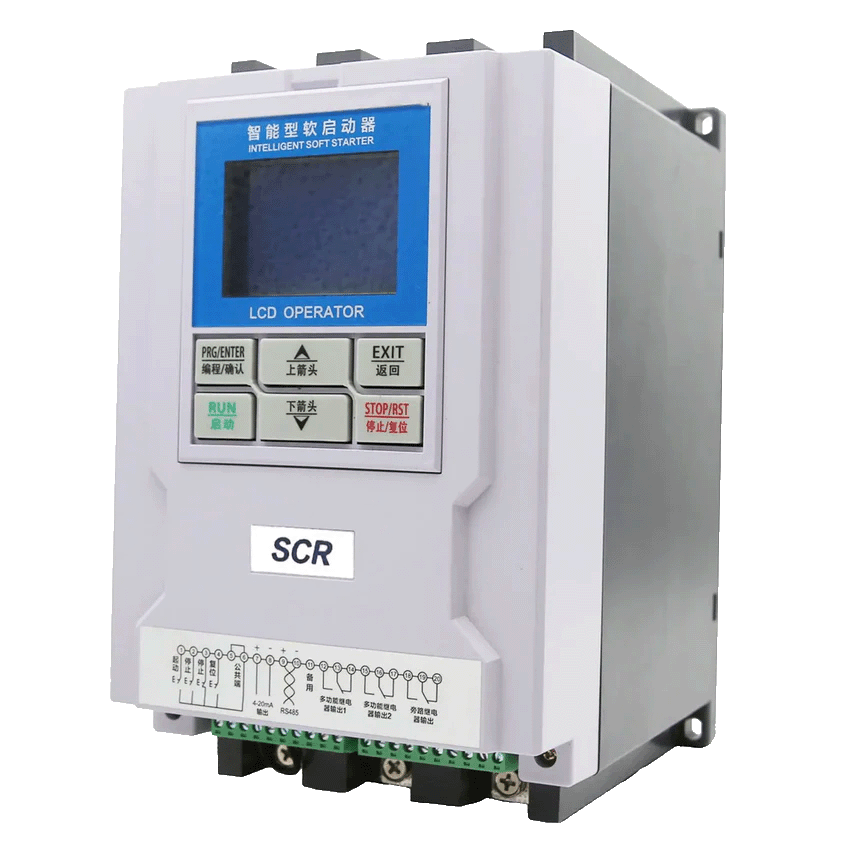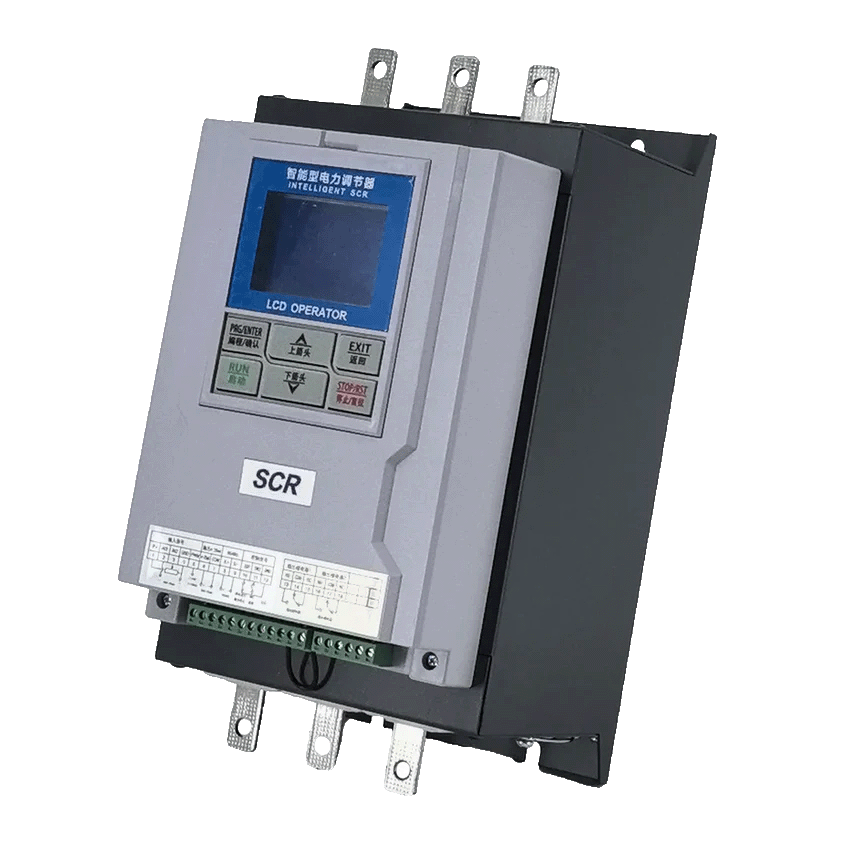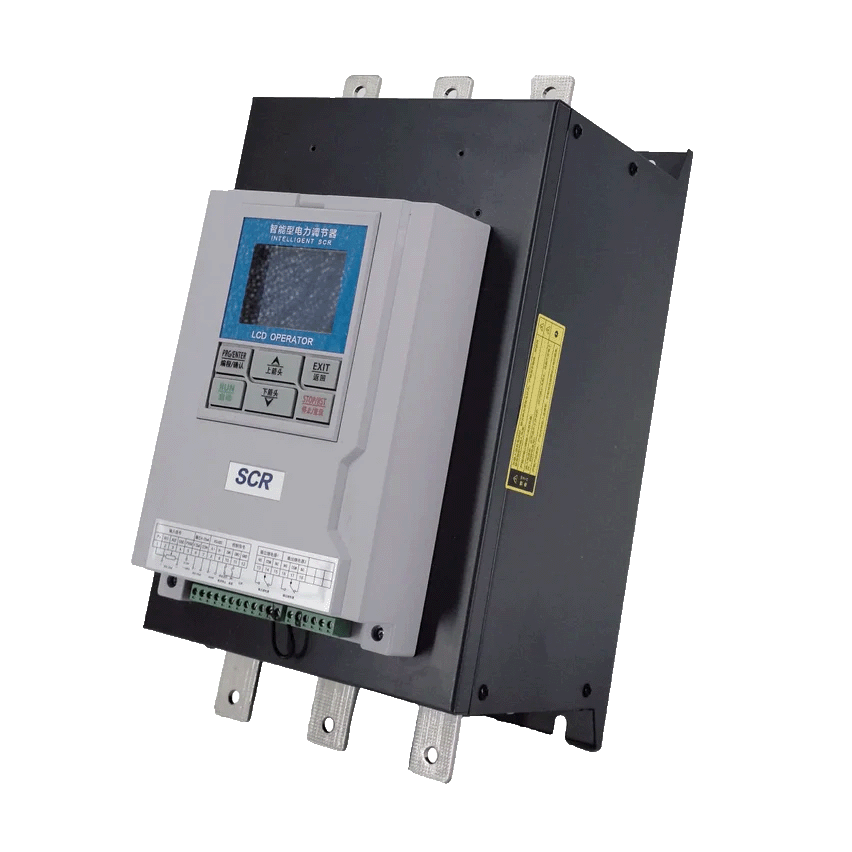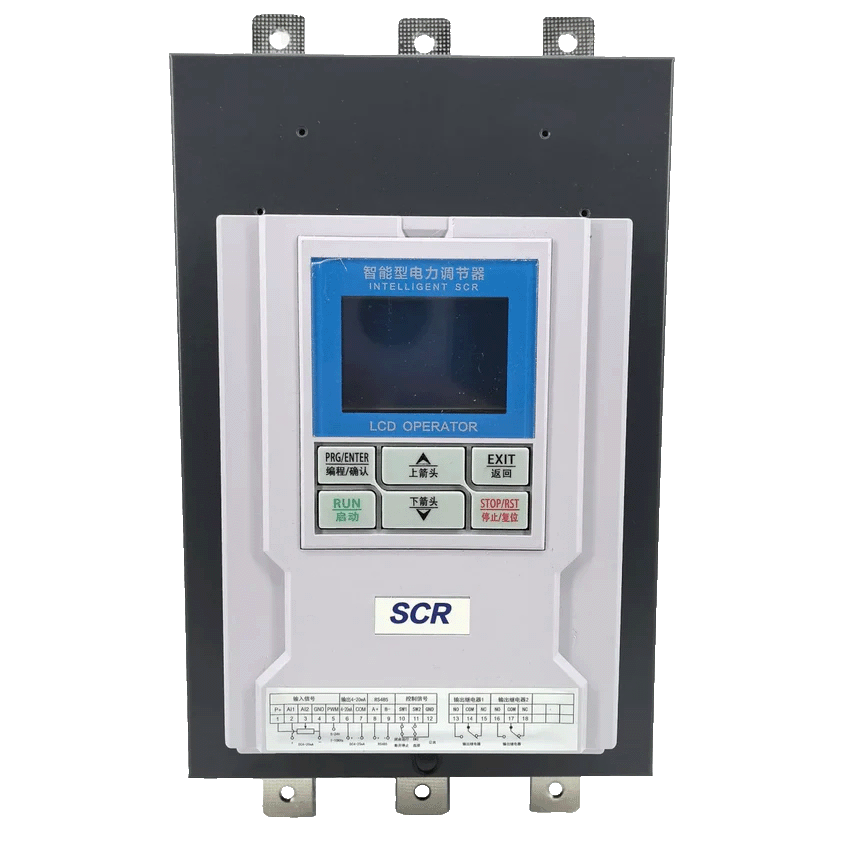How Much Power Should a 3-Phase SCR Regulator Have for Heater Control?
Choosing an SCR Power Controller for a 380V Power Supply
1. Determine the Heater’s Power
2. If Only Current is Known
P = √3 * U * IChoosing an SCR Power Controller for 220V or 440V Power Supply
3. Adjusting for 220V or 440V
Heater Power ÷ Voltage × 380V ÷ 0.8 = Minimum SCR Power Controller Rating
Quick Reference Table for SCR Power Controller Selection
| 220V Heater Power (kW) | 380V Heater Power (kW) | 440V Heater Power (kW) | SCR Power Controller Selection |
|---|---|---|---|
| 0 < P ≤ 7.41 | 0 < P ≤ 12.8 | 0 < P ≤ 14.82 | APR3H16G |
| 7.41 < P ≤ 10.19 | 12.8 < P ≤ 17.6 | 14.82 < P ≤ 20.38 | APR3H22G |
| 10.19 < P ≤ 13.89 | 17.6 < P ≤ 24 | 20.38 < P ≤ 27.79 | APR3H30G |
| 13.89 < P ≤ 18.53 | 24 < P ≤ 32 | 27.79 < P ≤ 37.05 | APR3H40G |
| 18.53 < P ≤ 23.16 | 32 < P ≤ 40 | 37.05 < P ≤ 46.32 | APR3H50G |
| 23.16 < P ≤ 27.79 | 40 < P ≤ 48 | 46.32 < P ≤ 55.58 | APR3H60G |
| 27.79 < P ≤ 32.42 | 48 < P ≤ 56 | 55.58 < P ≤ 64.84 | APR3H70G |
| 32.42 < P ≤ 37.05 | 56 < P ≤ 64 | 64.84 < P ≤ 74.11 | APR3H80G |
| 37.05 < P ≤ 41.68 | 64 < P ≤ 72 | 74.11 < P ≤ 83.37 | APR3H90G |
| 41.68 < P ≤ 46.32 | 72 < P ≤ 80 | 83.37 < P ≤ 92.63 | APR3H100G |
| 46.32 < P ≤ 50.95 | 80 < P ≤ 88 | 92.63 < P ≤ 101.89 | APR3H110G |
| 50.95 < P ≤ 61.14 | 88 < P ≤ 105.6 | 101.89 < P ≤ 122.27 | APR3H132G |
| 61.14 < P ≤ 69.47 | 105.6 < P ≤ 120 | 122.27 < P ≤ 138.95 | APR3H150G |
| 69.47 < P ≤ 74.11 | 120 < P ≤ 128 | 138.95 < P ≤ 148.21 | APR3H160G |
| 74.11 < P ≤ 81.05 | 128 < P ≤ 140 | 148.21 < P ≤ 162.11 | APR3H175G |
| 81.05 < P ≤ 92.63 | 140 < P ≤ 160 | 162.11 < P ≤ 185.26 | APR3H200G |
| 92.63 < P ≤ 101.89 | 160 < P ≤ 176 | 185.26 < P ≤ 203.79 | APR3H220G |
| 101.89 < P ≤ 115.79 | 176 < P ≤ 200 | 203.79 < P ≤ 231.58 | APR3H250G |
| 115.79 < P ≤ 129.68 | 200 < P ≤ 224 | 231.58 < P ≤ 259.37 | APR3H280G |
| 129.68 < P ≤ 138.95 | 224 < P ≤ 240 | 259.37 < P ≤ 277.89 | APR3H300G |
| 138.95 < P ≤ 148.21 | 240 < P ≤ 256 | 277.89 < P ≤ 296.42 | APR3H320G |
| 148.21 < P ≤ 162.11 | 256 < P ≤ 280 | 296.42 < P ≤ 324.21 | APR3H350G |
| 162.11 < P ≤ 185.26 | 280 < P ≤ 320 | 324.21 < P ≤ 370.53 | APR3H400G |
| 185.26 < P ≤ 208.42 | 320 < P ≤ 360 | 370.53 < P ≤ 416.84 | APR3H450G |
| 208.42 < P ≤ 231.58 | 360 < P ≤ 400 | 416.84 < P ≤ 463.16 | APR3H500G |
| 231.58 < P ≤ 254.74 | 400 < P ≤ 440 | 463.16 < P ≤ 509.47 | APR3H600G |
| 254.74 < P ≤ 277.89 | 440 < P ≤ 480 | 509.47 < P ≤ 555.79 | APR3H600G |
| 277.89 < P ≤ 291.79 | 480 < P ≤ 504 | 555.79 < P ≤ 583.58 | APR3H630G |
Conclusion
APR3H Series SCR Power Controller




